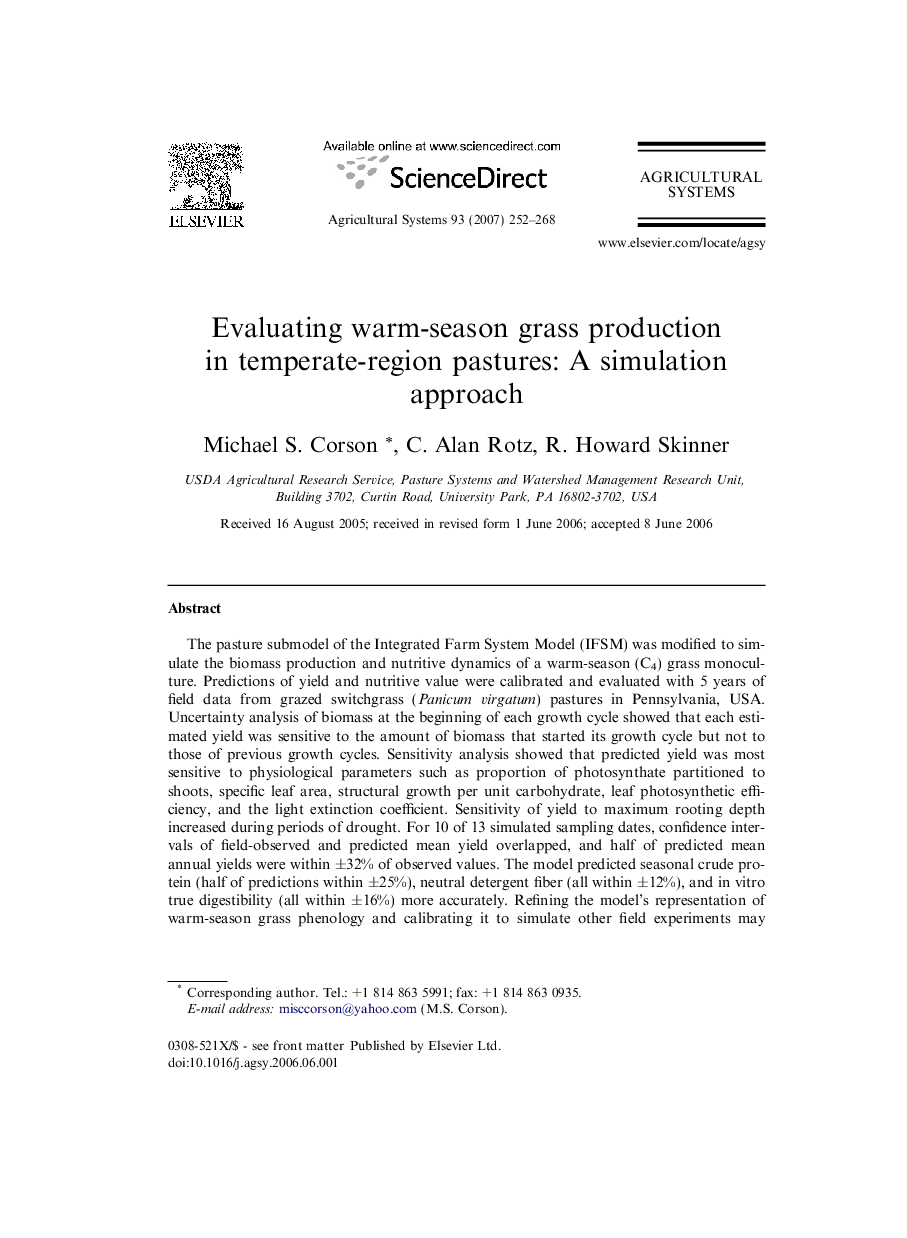| Article ID | Journal | Published Year | Pages | File Type |
|---|---|---|---|---|
| 4491860 | Agricultural Systems | 2007 | 17 Pages |
The pasture submodel of the Integrated Farm System Model (IFSM) was modified to simulate the biomass production and nutritive dynamics of a warm-season (C4) grass monoculture. Predictions of yield and nutritive value were calibrated and evaluated with 5 years of field data from grazed switchgrass (Panicum virgatum) pastures in Pennsylvania, USA. Uncertainty analysis of biomass at the beginning of each growth cycle showed that each estimated yield was sensitive to the amount of biomass that started its growth cycle but not to those of previous growth cycles. Sensitivity analysis showed that predicted yield was most sensitive to physiological parameters such as proportion of photosynthate partitioned to shoots, specific leaf area, structural growth per unit carbohydrate, leaf photosynthetic efficiency, and the light extinction coefficient. Sensitivity of yield to maximum rooting depth increased during periods of drought. For 10 of 13 simulated sampling dates, confidence intervals of field-observed and predicted mean yield overlapped, and half of predicted mean annual yields were within ±32% of observed values. The model predicted seasonal crude protein (half of predictions within ±25%), neutral detergent fiber (all within ±12%), and in vitro true digestibility (all within ±16%) more accurately. Refining the model’s representation of warm-season grass phenology and calibrating it to simulate other field experiments may improve predictions of seasonal biomass production. The whole-farm model with a warm-season grass component will provide a useful research and teaching tool for evaluating the long-term economic and environmental sustainability of dairy and beef production systems in warm temperate regions.
